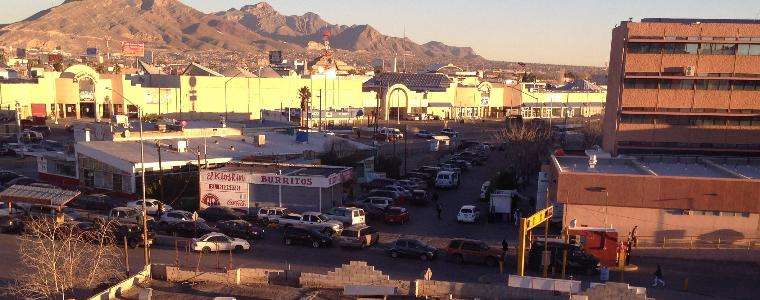U.S.-Mexico borderland communities are resilient, says researcher

An academic from the University of the West of England (UWE Bristol) who has extensively studied communities on the borderlands between the US and Mexico, says these communities' strong cross-border cultural identity and economic ties make them undaunted by the possibility of a physical wall.
Dr Hugo Gaggiotti has worked extensively with border communities such as Ciudad Juárez in Mexico, which has experienced rapid growth in youth employment in assembly plants known as maquilas, which have been set up, mostly by US carmakers, aerospace and pharmaceutical companies. Maquilas are ways for multinational, mostly American, companies to carry out labour-intensive work in Mexico, such as car dashboard wiring assembly, without having to pay import or export taxes.
Dr Gaggiotti's research is part of a British Academy of Social Sciences-Newton Fund funded project aimed at providing support for youngsters and families in Mexican-USA borderlands.
Working with Mexican researchers, he met and interviewed 100 people living on the crossover points of El Paso-Ciudad Juárez to identify the socioeconomic needs of the working populations in this borderland region of rapid population growth. In the maquilas, the workers are predominantly young women. Over the last ten years, unprecedented levels of violence in particular to women and youngsters have been recorded.
Dr Gaggiotti says, "I interviewed many young (especially Mexican and Mexican-American) families as part of this research and far from being scared of a solid divide, people living on both sides of the border show no anxiety, as many believe a solid structure would indeed unite the border populations in a common claim. People living and working in this vicinity feel that their identities are enshrined in a cross-border culture. Many Americans living in these regions are second or third generation Mexican and many Mexican Americans feel this is part of the same country.
"The border region is defined as the land that stretches 100 kilometres either side of the frontier. People on both sides rely on each other for work and many US states on this line, like California, consider this area as a single economic region, with commuting for work taking place in both directions and several businesses in the two countries relying on this movement.
"I think a wall would simply encourage business owners on both sides to accommodate their companies to facilitate movement and would fuel their workers' determination to continue to move across the border, for work, educational or family reasons.
"In the US, the country's 50 States also wield power, especially where their borders are concerned. For instance the city of El Paso in Texas, which borders with Ciudad Juárez, is organised to favour transit of people and cargo from one country to the other. The University of Texas at El Paso indeed relies heavily on Mexican students, who as long as they reside within the border limits, pay the same tuition fees as Americans. To facilitate their border crossing, it issues them with bespoke university ID cards. If you build a wall, you immediately need a door for people to pass through."
Dr Gaggiotti is also helping local academics to develop the robust research methods needed to observe the issues posed by these organisational structures and the social impacts on these rapidly growing bi borderland cities.
Provided by University of the West of England

















